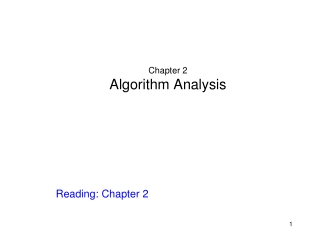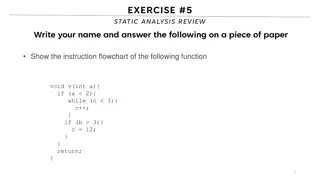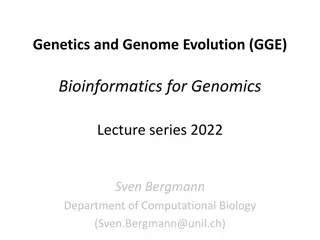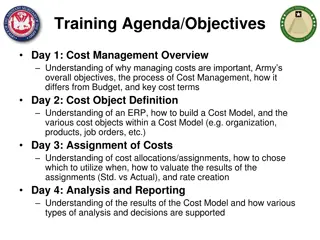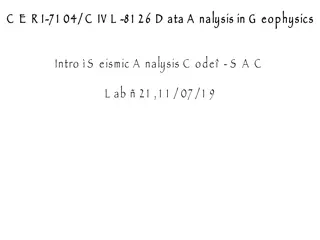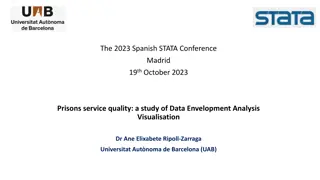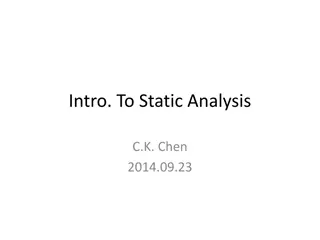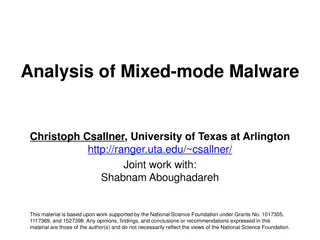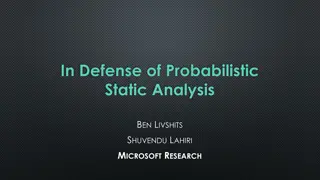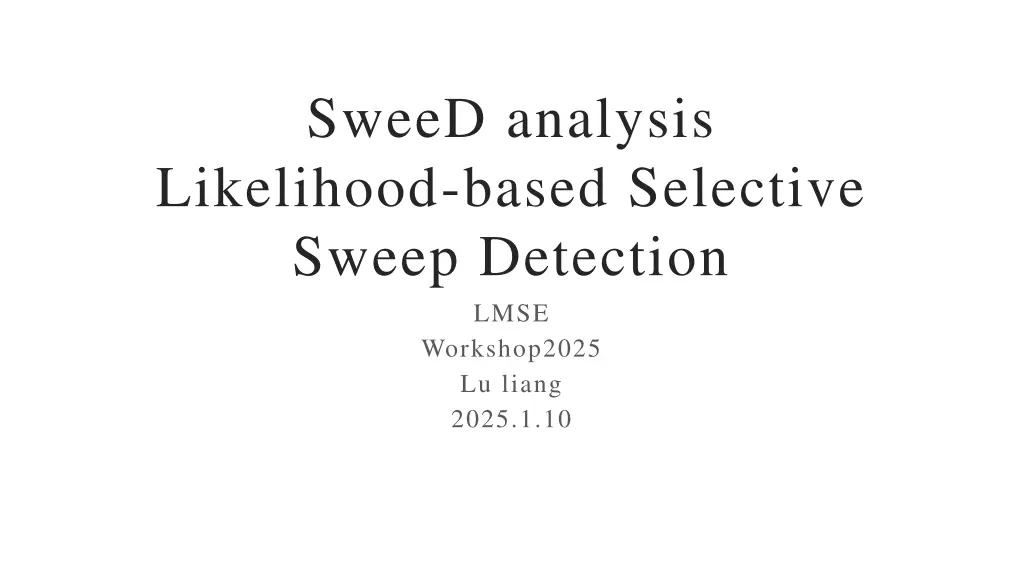
Selective Sweep Detection Using Likelihood-Based Analysis
Learn about SweeD analysis for detecting selective sweeps, based on likelihood methods. Understand how selective sweeps affect the Site/Allele Frequency Spectrum and how to run SweeD to analyze genomic data effectively.
Download Presentation

Please find below an Image/Link to download the presentation.
The content on the website is provided AS IS for your information and personal use only. It may not be sold, licensed, or shared on other websites without obtaining consent from the author. If you encounter any issues during the download, it is possible that the publisher has removed the file from their server.
You are allowed to download the files provided on this website for personal or commercial use, subject to the condition that they are used lawfully. All files are the property of their respective owners.
The content on the website is provided AS IS for your information and personal use only. It may not be sold, licensed, or shared on other websites without obtaining consent from the author.
E N D
Presentation Transcript
SweeD analysis Likelihood-based Selective Sweep Detection LMSE Workshop2025 Lu liang 2025.1.10
SFS and Generations() Not surprisingly, selective sweeps have a dramatic effect on the scaled SFS. Near the point of fixation, the scaled SFS is characterized by an abundance of very high-frequency alleles and a near absence of intermediate frequency alleles (Figure E). Importantly, the scaled SFS of regions evolving under selective sweeps differs even in the prefixation and postfixation regimes from that of regions evolving neutrally (Figure D and F). (Roy Ronen et. al. 2013)
Usage Input data -> .vcf file Extract single chromosome vcf file $ vcftools --vcf test.vcf --recode --recode-INFO-all --stdout --chr chr1 > chr1.vcf Calculate SweeD windows (10kb) $ grep chr1 chr1.vcf ##contig=<ID=chr1,length=31077448> -grid = 31077448 / 10000 = 3107
Usage Run SweeD $ SweeD -name pop1.chr1.10kb \ -input test_old.vcf \ -grid 3107 \ -minsnps 200 \ -maf 0.05 \ -missing 0.1

